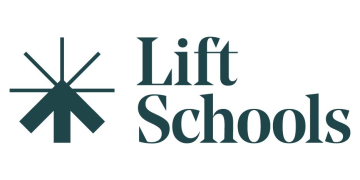While parents do engage in school choice, the system of using proximity to determine admission means that some households have negligible chance of admission to the best schools, explain Simon Burgess, Ellen Greaves and Anna Vignoles
Parents in England have just made their secondary school choices, and we have carried out some research looking at the type of choices made by different groups of parents.
The quality of the school a pupil attends influences their academic attainment, university participation and labour market success.
Many parents therefore prioritise securing a place at a good school, but are limited in their choices by proximity and other criteria used to allocate children to schools. Not all parents have the same kinds of choices available to them.
Using new national data on all the choices made by all the parents in England for the cohort entering secondary school in 2015-2016, our analysis explores the number and type of choices parents make and the likelihood that their children will be admitted to their first-choice school.
Our main findings are as follows:
Parents are actively engaged with school choice
Only 35 per cent of households opt to make just one choice and only 39 per cent of households simply nominate their closest school. So most households are making more than one choice and not just choosing their nearest school as a default option.
Urban parents make more choices
Households in urban areas are even more active, making many more choices than those in rural areas, perhaps unsurprisingly.
Most households get their first choice – but beware interpretation
Nationally, 85 per cent of households are offered a place at their first-choice school. Of course, this does not necessarily mean that 85 per cent of parents wanted their child to attend that school above all other schools. Some parents will make a “safe” choice to ensure that their child gets in somewhere reasonably acceptable to them. This is particularly the case in local authorities that permit only three choices on the form (many allow six), which encourages parents to play it quite safe with their options.
All this means that interpreting the data on parents’ choices requires care. For example, a high proportion of parents getting their first choice could indicate that many feel unable to make any genuinely ambitious choices – not what was intended by the school choice system.
EAL and BAME households make more ambitious choices
Strikingly, households where English is an additional language or where the child is black or Asian, make more choices, even after allowing for the fact that such households are disproportionately located in urban areas where all parents tend to make more choices. EAL households make 3.2 choices on average, as do Asian families, with black families making 3.7 choices on average.
We might take this as indicative of a high level of engagement with the school choice process in these households. However, despite this engagement, such households are less likely to be offered a place at their first-choice school. Seventy-three per cent of EAL parents get their first choice, alongside 72 per cent of Asian parents and 66 per cent of Black parents. Our data suggests this is because these families on average make more ambitious first choices and this explains their lower chances of success with that first ambitious choice.
FSM households choose schools with lower academic attainment
Households eligible for free school meals (FSMs) make similar numbers of choices to non-FSM households (2.4 choices on average). FSM and non-FSM households are more or less equally likely to receive an offer from their first-choice school (84 per cent and 85 per cent respectively), but FSM households choose, on average, schools with lower academic attainment.
This potentially indicates that such parents prioritise other factors over school quality but it also reflects the fact that poorer students live nearer to lower-quality schools. Whilst the school choice process is clearly actively used by poorer households, it is not able to overcome the disadvantage of being unable to afford to live near a better school.
We conclude that while parents do engage in school choice, options are curtailed for many because of a system that uses proximity to determine admission – which ultimately means some households have a negligible chance of admission to the best schools.
Co-authored by Simon Burgess, Ellen Greaves and Anna Vignoles








The report says “poorer students live nearer to lower-quality schools”
In this context “lower-quality schools” means lower GCSE results.
Could it be that where you have lots of poorer students, the schools have lower GCSE results because they teach lots of poorer students.
Are we surprised to find that rich people live nearer to schools with higher GCSE results and that schools with lots of rich students get better GCSE results?
Will this group’s next report be “people who live in countries with a poor health system have poorer health”.
The report makes several wild assumptions such as making more choices is ” indicative of a high level of engagement with the school choice process in these households”. I cannot see any data asking people why they made the number of choices that they did. When you tick more choices on your form you automatically are less likely to get any one of those choices.
The whole report could benefit from a critique by a statistician.
The use of the word choice is interesting and loaded. It suggests that people from poorer backgrounds are not “choosing” better schools for their children. What in reality happens, is that they can’t afford the transport to a school further away. Because their local school is in a poorer catchment area, middle class families stay away. The school becomes populated with children with highest disadvantage. We know that children living in disadvantage do worse than those from affluent areas, not because the schools are poorer, but in fact because of a combination of a number of factors. Stress, poverty, access to food, access to quiet places to study, lack of access to extra curricular and costly sports and arts activities and crucially lack of access to the extensive and expensive army of private tutors that middle class families employ and which reflect so well on the schools who then reap the benefits of GCSE results. But, hey, of course it’s down to choice!!